From ancient architecture to fashion, Italy is famous for its rich culture, history, and cuisine. Explore the reasons why Italy is a must-visit destination.

Things Italy Is Known For
Italy is a country that has captured the world's imagination with its stunning landscapes, rich culture, and history. Known as the birthplace of the Renaissance, Italy boasts an impressive collection of art and architecture that continues to inspire people today.
From the awe-inspiring works in the Vatican Museum to the towering Colosseum in Rome, Italy is home to some of the world's most monumental landmarks.
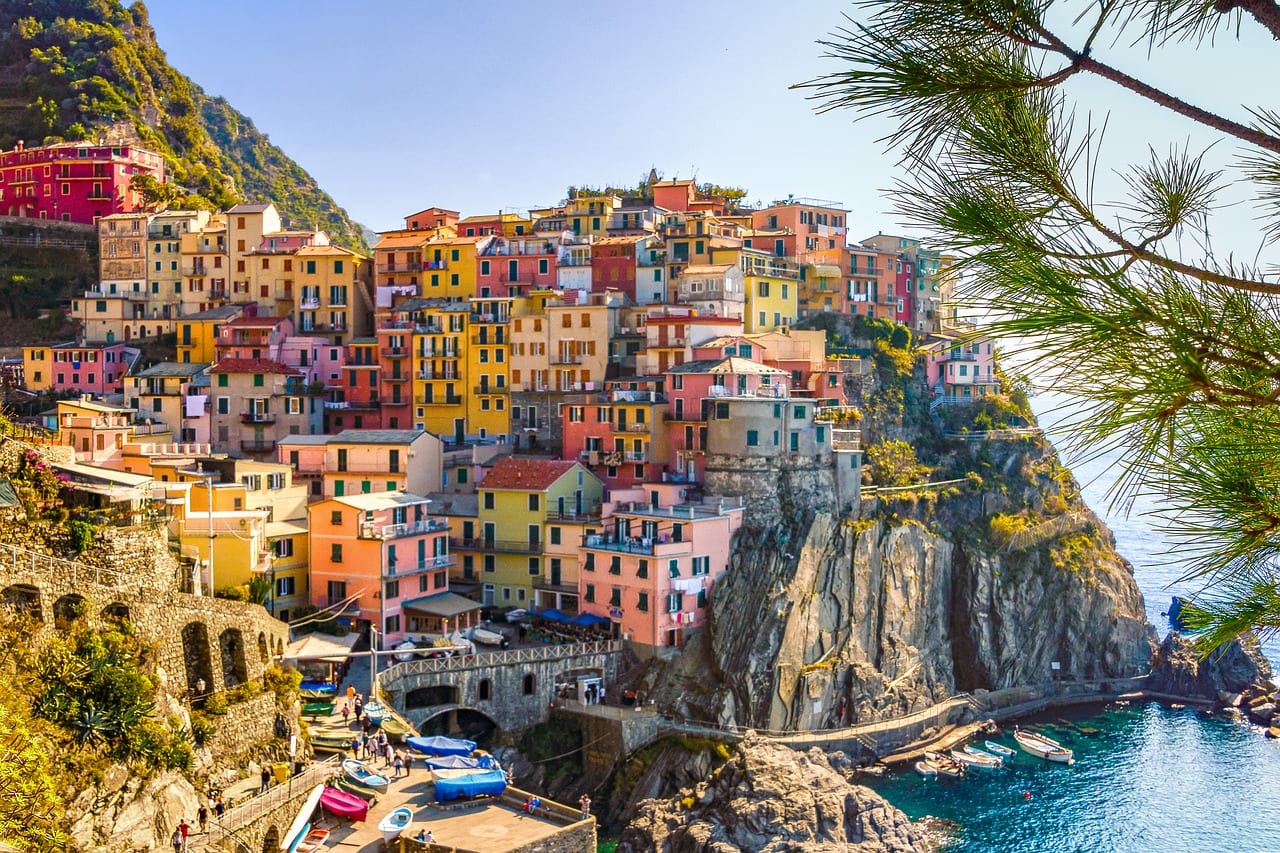
But Italy isn't just about its past. Its cuisine is renowned worldwide, with pizza and pasta being among the most well known things associated with Italy. Italian food is known for its simplicity and focus on fresh, high-quality ingredients. From the rich flavors of risotto to the creamy goodness of gelato, there's no shortage of delicious dishes to enjoy in Italy.
Many of my readers combine a trip to Italy with Greece when planning a European cruise. For the most part their destinations include Rome and Florence, but of course there is much more to the country waiting to be discovered.
Let's take a look in more detail at the most iconic things Italy is known for, and discover why this Mediterranean paradise should be on everyone's Europe travel bucket list.
Get to know Italy by…
- Tasting the flavors of Italy with famous dishes like pizza, pasta, and gelato. And don't forget the coffee!
- Picturing yourself as a gladiator in the Colosseum
- Admiring Renaissance artworks in Florence and Rome or exploring natural wonders from the Alps to the Amalfi Coast.
- Enjoying Italian craftsmanship, opera & musical heritage as well as family values & traditions unique to this country.
Italy Famous Landmarks
- The Colosseum (Rome)
- The Leaning Tower of Pisa (Pisa)
- The Vatican City (Rome)
- The Pantheon (Rome)
- The Trevi Fountain (Rome)
- The Duomo di Milano (Milan)
- The Bridge of Sighs (Venice)
- The Doge's Palace (Venice)
- The Grand Canal (Venice)
- The Cinque Terre (Liguria)
- Pompeii Archaeological Site (Naples)
- The Amalfi Coast (Salerno)
- The Uffizi Gallery (Florence)
- The Accademia Gallery (Florence)
- The Palazzo Vecchio (Florence)
Related: Venice Captions
Ancient Rome and Its Legacy
If we have to start somewhere, let's start at the beginning!
The legacy of Ancient Rome, spanning over a thousand years, is still palpable today. The iconic Colosseum, Roman Forum, and Pompeii stand as testaments to the enduring impact of this great civilization.
As you explore these ancient sites, you'll be transported back in time, gaining a deeper understanding of the people and culture that shaped the world we know today.
Colosseum: A Symbol of Roman Power
The Colosseum, an awe-inspiring symbol of Roman power, is an unmissable landmark in Italy. This ancient amphitheater, built in the 1st century AD, was the site of gladiatorial contests, animal hunts, and other spectacles that entertained the masses.
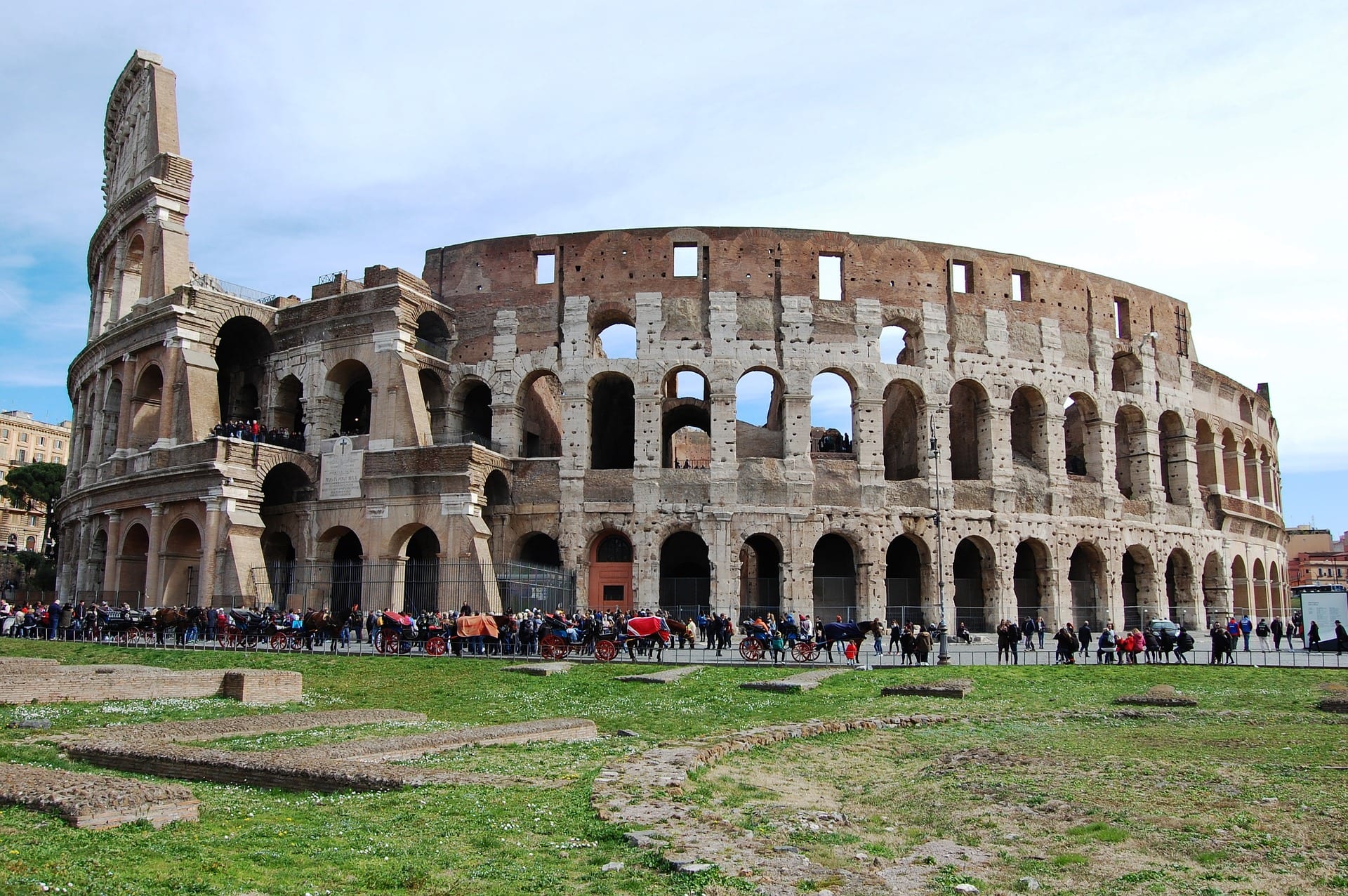
Today, the Colosseum stands as a testament to the ingenuity and might of the Roman Empire, and a visit to this impressive structure is a must for anyone exploring Italy's rich history.
Related: Amazing Landmarks In Europe
Roman Forum: The Center of Public Life
The Roman Forum, once the center of public life in Ancient Rome, remains an important archaeological site that offers a glimpse into the daily lives of the Romans.
This bustling plaza, surrounded by government buildings, temples, and other public spaces, served as a gathering place for political discussions, religious ceremonies, and social events.
As you wander through the ruins, you'll gain a deeper understanding of the culture and customs that shaped the Roman Empire.
Related: Best way to see Rome in a day
Pompeii: A Glimpse into the Past
Pompeii, the ancient city destroyed by the eruption of Mount Vesuvius in 79 AD, is a UNESCO World Heritage Site that offers an extraordinary glimpse into the past.
The well-preserved ruins of Pompeii provide a unique opportunity to explore the daily lives of its inhabitants, from their homes and shops to their public spaces.
As you walk the ancient streets, you'll be amazed by the level of detail and the stories that unfold before your eyes.
Related: Rome Captions For Instagram
What is Rome famous for?
Rome is famous for its ancient landmarks, including the Colosseum, Pantheon, and Roman Forum. The city is also home to the Vatican City, St. Peter's Basilica, and the Sistine Chapel. Additionally, Rome is known for its delicious cuisine, including pizza, pasta, and gelato, as well as its vibrant street life and stunning architecture.
Renaissance Art and Architecture
Italy's artistic and architectural heritage is nothing short of breathtaking, and the Renaissance period (14th-17th centuries) is a shining example of the country's immense contributions to the world of art.
With the works of legendary artists such as Michelangelo, Leonardo da Vinci, and Raphael, Italy's cities are adorned with masterpieces that have stood the test of time.
Birthplace of the Renaissance: Florence
Florence, the beautiful city on the banks of the Arno River, is considered the birthplace of the Renaissance. Home to majestic structures like the Cathedral of Santa Maria del Fiore (Il Duomo) and the Uffizi Gallery, which houses works by Michelangelo and da Vinci, Florence is a treasure trove of artistic brilliance.
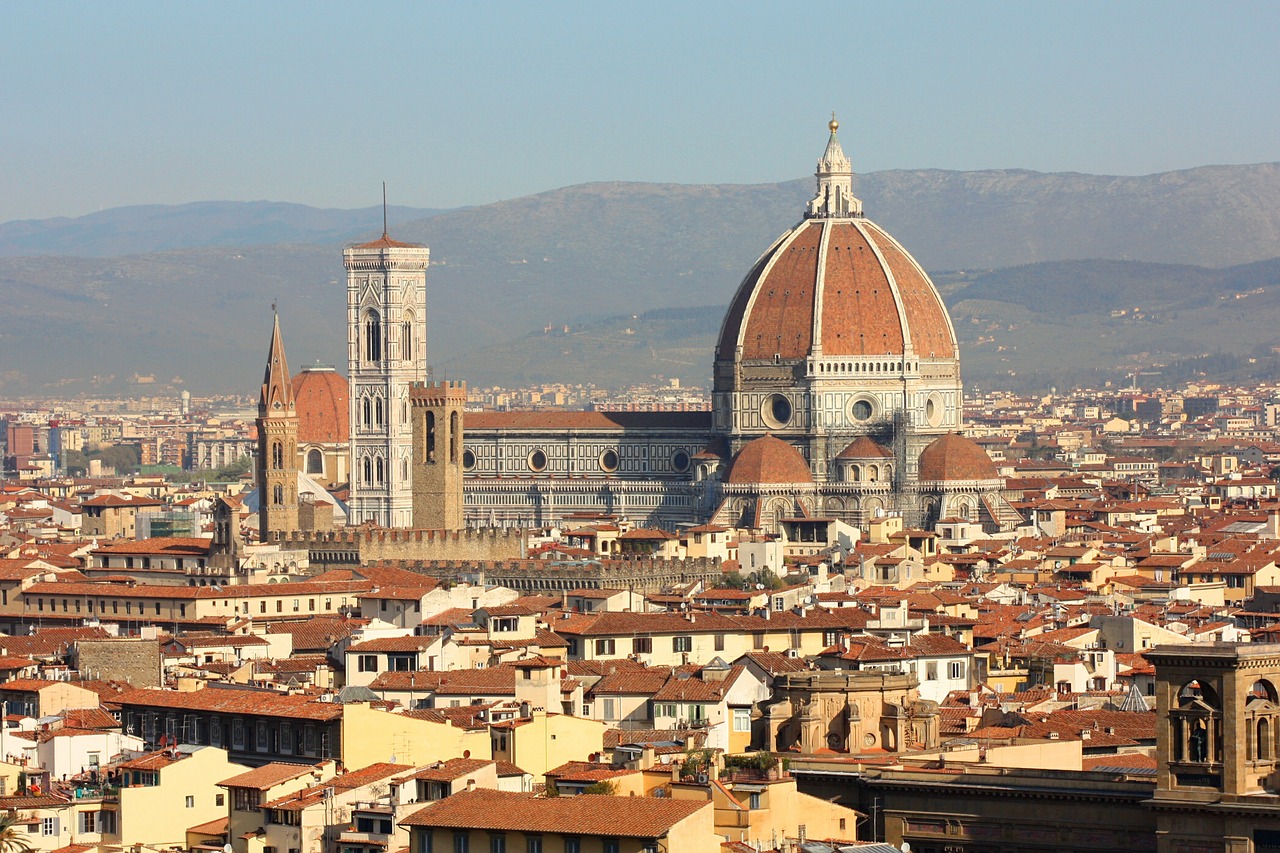
A visit to this enchanting city is a journey through time, as you immerse yourself in the world of Renaissance art and architecture.
Related: Day trips from Florence
What is Florence famous for?
Florence is famous for its incredible art and architecture, including Michelangelo's David sculpture and the stunning Duomo di Firenze. The city is also home to the Uffizi Gallery, which houses some of the world's most iconic works of art, as well as the Accademia Gallery. Florence is also known for its delicious cuisine, including Tuscany's famous steak, as well as its vibrant street life and charming piazzas. Additionally, the city is home to numerous historic landmarks, such as the Palazzo Vecchio and the Ponte Vecchio.
Masterpieces in Rome and Vatican City
Rome and Vatican City are also home to several Renaissance masterpieces that showcase the immense talent of Italian artists.
The awe-inspiring Sistine Chapel ceiling painted by Michelangelo, Raphael's frescoes in the Vatican Palace, Bernini's Apollo and Daphne, and Caravaggio's paintings in the Contarelli Chapel are just a few of the artistic wonders that await visitors in the Eternal City.
These works of art are a testament to the creativity and skill of the Italian people, and a reminder of the city's long and storied history.
Related: Vatican and Colosseum Tours
Venice's Unique Artistic Charm
The romantic city of Venice, with its winding canals and distinctive architecture, also boasts a unique artistic charm. The works of Titian, Giovanni and Gentile Bellini, Tintoretto, and Paolo Veronese grace the walls of the city's churches and palaces.
The delicate art of Venetian glassmaking adds another layer of beauty to this unforgettable destination.
What is Venice famous for?
Venice is famous for its romantic canals, historic architecture, and stunning views. The city is renowned for its picturesque bridges, including the iconic Rialto Bridge and the Bridge of Sighs. Venice is also home to the Doge's Palace, St. Mark's Basilica, and the Grand Canal. Additionally, the city is known for its colorful and lively Carnivale celebrations, as well as its delicious seafood and Venetian cuisine.
Luxury Fashion and Design
Italy's reputation for luxury fashion and design is truly unparalleled. The heart of Italian fashion beats in Milan, a city that has given birth to some of the world's most iconic fashion brands and designers. From the glamorous runway shows of Milan Fashion Week to the exquisite craftsmanship that defines Italian leather goods, Italy continues to set the standard for style and elegance.
The country's fashion industry is renowned for its quality and attention to detail. From the intricate embroidery of Dolce & Gabbana to the intricate embroidery of Dolce & Gabbana.
Milan: The Heart of Italian Fashion
Milan, the bustling metropolis in Northern Italy, is the epicenter of Italian fashion. Home to the famous fashion neighborhood, the Quadrilatero d'Oro, Milan saw the rise of major fashion houses like Versace, Armani, and Dolce & Gabbana during the 70s and 80s.
Today, the city continues to shape global fashion trends and attract fashion enthusiasts from around the world.
What is Milan famous for?
Milan is famous as Italy's fashion and design capital, home to numerous high-end boutiques, fashion houses, and designer brands. The city is also known for its stunning art and architecture, including the Gothic Cathedral, or Duomo di Milano, and the iconic Galleria Vittorio Emanuele II shopping arcade. You'll also find several world-class museums in Milan, inclduing the Pinacoteca di Brera, home to an impressive collection of Italian art. Additionally, the city is renowned for its delicious cuisine, including classic dishes such as risotto alla Milanese and panettone.
Iconic Italian Brands and Designers
Italian fashion brands such as Gucci, Prada, Versace, Valentino, Armani, and Dolce & Gabbana have become synonymous with luxury and style. These designers have left an indelible mark on the world of fashion, setting trends and inspiring generations of designers to come.
From the elegant silhouettes of Valentino to the bold prints of Versace, Italian fashion continues to captivate and inspire.
Italian Craftsmanship and Leather Goods
The art of Italian craftsmanship is rooted in a deep appreciation for quality materials and meticulous attention to detail. Italian leather goods, in particular, are celebrated for their exceptional quality and timeless appeal.
From the luxurious handbags of Gucci and Fendi to the bespoke leather shoes crafted by skilled artisans, Italian craftsmanship is a testament to the country's dedication to excellence and style.
Italian Cuisine: A Taste of La Dolce Vita
One cannot think of Italy without its delectable cuisine springing to mind. Italian food is synonymous with the concept of “La Dolce Vita” – the sweet life – and it truly reflects the Italian culture and its love for delicious food.
Whether it's hearty pasta dishes, mouthwatering pizzas, or the irresistible gelato, Italian cuisine is a celebration of flavors that has conquered the entire world.
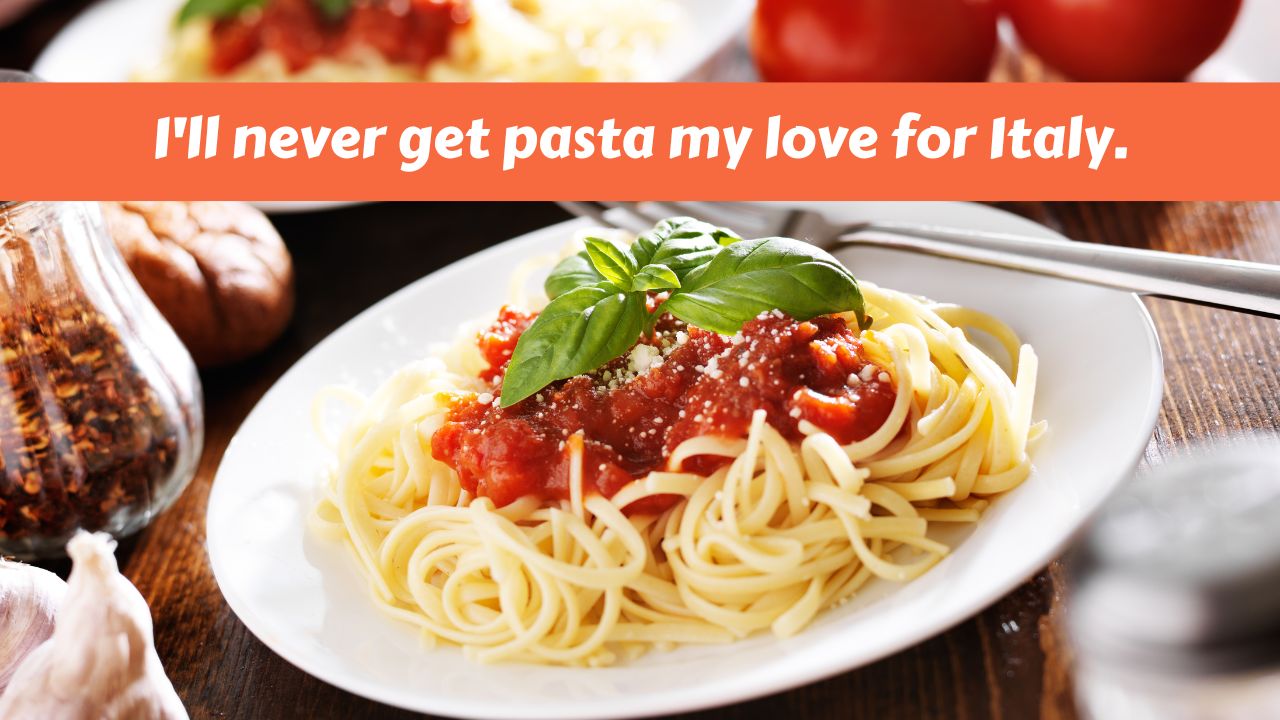
Pizza: Naples' Gift to the World
When it comes to pizza, Italy is undoubtedly the birthplace of this world-famous dish. In fact, the classic Neapolitan pizza, with its thin dough, tomato sauce, mozzarella, and basil, originated in Naples in 1889. The Margherita pizza, named after Queen Margherita of Savoy, even bears the colors of the Italian flag: red tomato sauce, white mozzarella, and green basil leaves.
Today, pizza is enjoyed in every corner of the globe, and a visit to Naples to savor its authentic taste is a must for any pizza lover.
Pasta: The National Dish with Endless Variations
Pasta holds a special place in the hearts of Italians as the national dish, with recipes and variations that differ from region to region. Carbonara from Rome, pesto from Genova, and Bolognese from Bologna are just a few examples of the diverse pasta dishes Italy has to offer.
With countless shapes, sizes, and flavors, pasta is right up there with pizza when it comes to Italian food. And let's not forget the importance of cooking pasta “al dente” – firm to the bite – for the perfect Italian pasta experience.
Gelato: A Creamy Italian Delight
Gelato, the creamy Italian delight that has won over taste buds across the globe, can trace its history back to the 16th century. First served to the court of Catherina dei Medici in Florence, gelato is known for its lower fat content and more intense flavor compared to traditional ice cream.
Today, artisanal gelaterias continue to craft gelato using natural ingredients, creating a wide range of unique flavors that make it a must-try treat when visiting Italy.
Related: Best time to visit Europe
Stunning Landscapes and Natural Wonders
Italy's stunning landscapes and natural wonders are a feast for the eyes, with the Amalfi Coast, Italian Alps and Dolomites, and enchanting Italian lakes offering breathtaking scenery and unforgettable experiences.
Whether you're exploring the rugged coastline of the south or the majestic mountains of the north, Italy's diverse landscapes are sure to leave a lasting impression.
Amalfi Coast: A Mediterranean Paradise
The Amalfi Coast, a Mediterranean paradise located in Southern Italy, is a UNESCO World Heritage Site celebrated for its rugged landscape, picturesque towns, and breathtaking views of the sea.
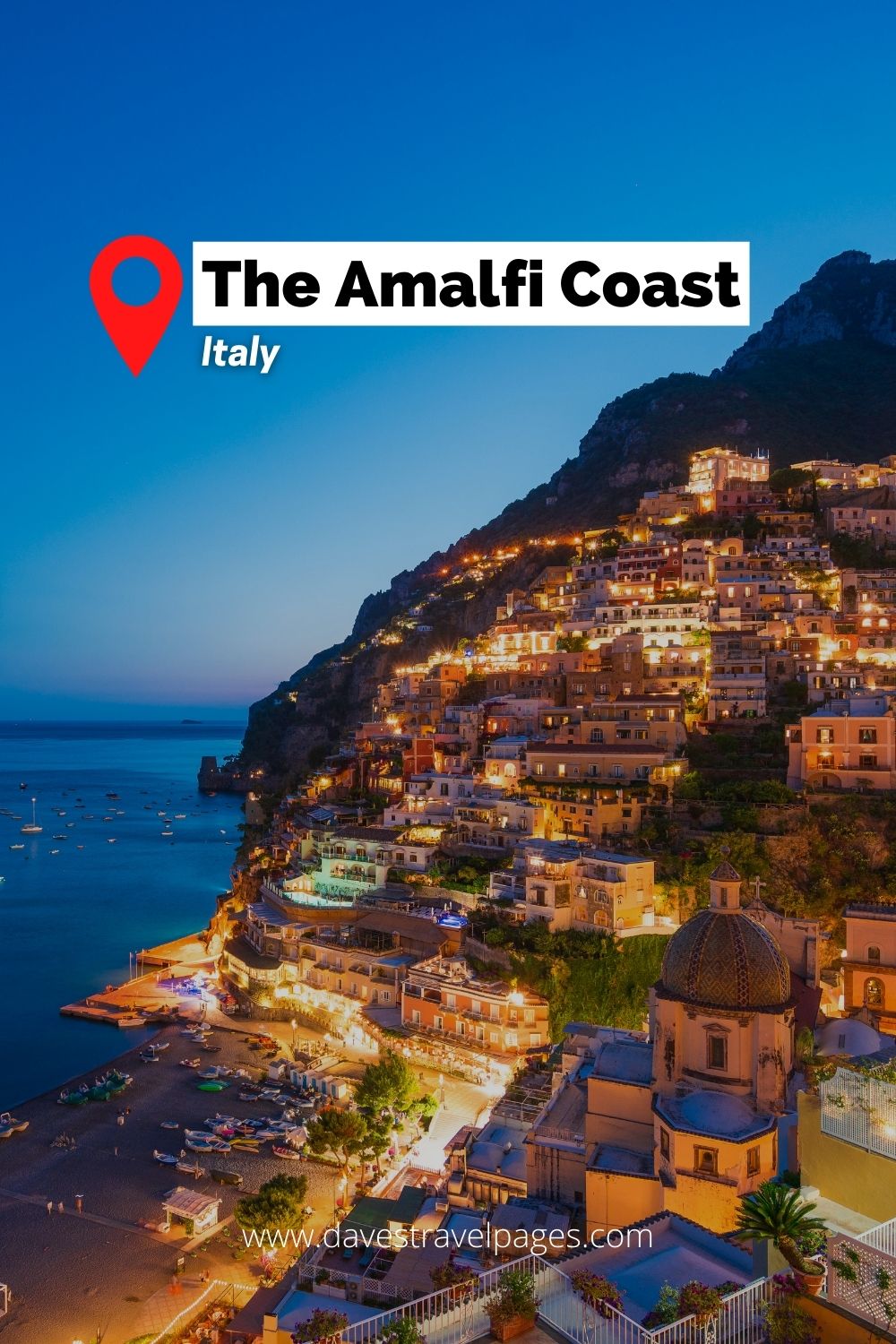
With colorful houses clinging to steep cliffs, fragrant lemon groves, and crystal-clear waters, the Amalfi Coast is a must-visit destination for anyone seeking the quintessential Italian experience.
Italian Alps and Dolomites: A Winter Wonderland
The Italian Alps and Dolomites, a winter wonderland in the north of Italy, offer a stunning backdrop for a variety of outdoor activities. From skiing and snowboarding to ice skating and snowshoeing, the snow-covered peaks and charming villages of this region provide a magical setting for a winter escape.
The unique culture and cuisine of the Italian Alps and Dolomites, with influences from Italian, Austrian, and Ladin traditions, only add to the enchanting allure of this picturesque destination.
Enchanting Italian Lakes: Como, Garda, and Maggiore
The enchanting Italian lakes of Como, Garda, and Maggiore, nestled at the foothills of the Alps, offer serene and romantic getaways. With crystal-clear waters, charming towns, and verdant hillsides, these lakes are the perfect setting for a leisurely escape from the hustle and bustle of city life.
As you explore the idyllic shores and quaint villages that surround these lakes, you'll be captivated by their beauty and irresistible charm.
Related: Italian Captions For Instagram
Italian Vehicles And Car Brands
Italy is also famous for its car brands and vehicles, from the sleek supercars of Ferrari and Lamborghini to the timeless symbol of the Vespa scooter.
These famous Italian creations are more than just modes of transportation; they embody the spirit and passion of Italy, and have become cultural icons in their own right.
The sports cars and scooters of Italy are renowned for their style and performance, and they have become symbols of the country's culture and identity. From the classic lines of the Ferrari to the classic Vespa, these vehicles are a testament to the classic lines of the Ferrari.
Supercars: The Ultimate Driving Experience
Italian supercars, such as Ferrari and Lamborghini, epitomize the ultimate driving experience, combining impressive performance, sleek style, and luxurious features. These powerful machines are the pinnacle of automotive engineering, and their distinctive designs have captured the imaginations of car enthusiasts around the world.
For those who crave speed, power, and the thrill of the open road, Italian supercars are the embodiment of La Dolce Vita.
Vespa: An Italian Symbol
The Vespa scooter, with its charming design and enduring appeal, has become a timeless Italian symbol since its creation in 1946. This ubiquitous mode of transportation, whose name means “wasp” in Italian, has been immortalized in films such as Roman Holiday and La Dolce Vita, capturing the essence of Italian life and style.
Today, the Vespa continues to be a beloved part of Italian culture, offering a fun and stylish way to explore the country's picturesque streets and piazzas.
Wine and Vineyards: Savoring Italy's Finest
Wine and vineyards hold a special place in Italian culture, as the country boasts some of the world's most renowned wine regions. From the rolling hills of Tuscany to the fertile plains of Veneto and Piedmont, Italy's diverse landscapes and rich history have given rise to a wide array of exceptional wines that are celebrated and enjoyed all over the world.
These wines are renowned for their unique characteristics, which are the result of the combination of the region's climate, soil, and grape varieties. The combination of these elements creates a unique flavor profile that is distinct to each region.
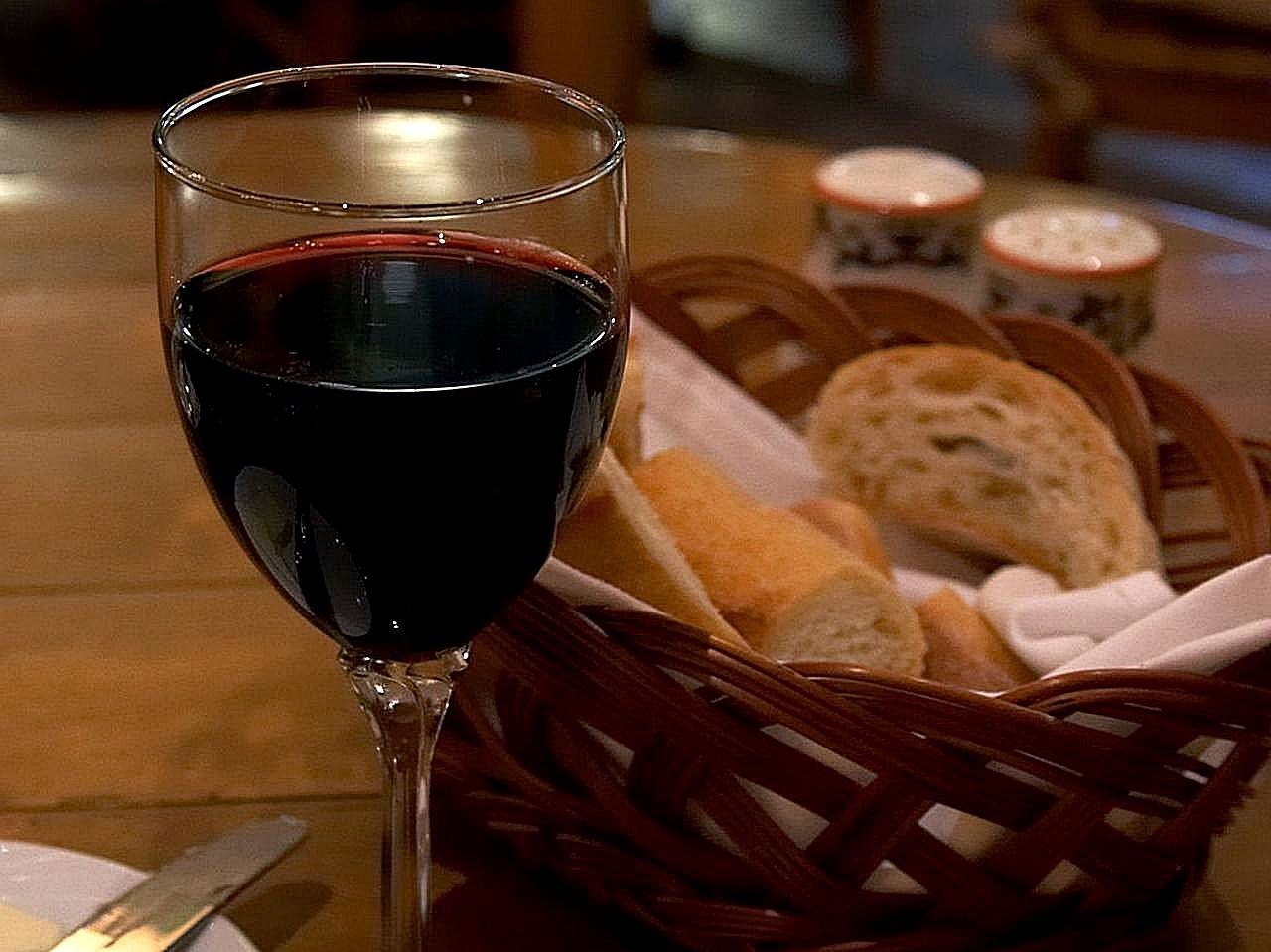
Tuscany: The Heart of Italian Wine Country
Tuscany, the heart of Italian wine country, is famous for its world-class wines such as Chianti, Brunello di Montalcino, and Vino Nobile di Montepulciano. With its picturesque vineyards, historic wineries, and centuries-old traditions, Tuscany has been producing wine since the Etruscan era.
A visit to this enchanting region is a must for any wine enthusiast, offering the opportunity to savor the finest Italian wines amidst the stunning beauty of the Tuscan countryside.
Veneto: Home of Prosecco
Veneto, the home of Prosecco, is another celebrated Italian wine region. Prosecco, a light and refreshing sparkling wine, originates from the small town of Prosecco near Trieste, and has become increasingly popular in recent years.
With its fruity flavors and affordable price point, Prosecco is the perfect accompaniment to a wide range of dishes and occasions, making it a beloved favorite among wine connoisseurs and casual drinkers alike.
Piedmont: Land of Barolo and Barbaresco
In the northwestern region of Piedmont, the land of Barolo and Barbaresco awaits. These highly regarded wines, made from the Nebbiolo grape, are known for their complex flavors and aging potential. With a rich history dating back to the 12th century, the wines of Piedmont have long been cherished by oenophiles and casual wine drinkers alike.
A visit to this region offers a unique opportunity to taste these exceptional wines and appreciate the craftsmanship that goes into every bottle.
Opera and Musical Heritage
Italy's opera and musical heritage is another source of pride and admiration. The country has produced some of the world's most famous composers, such as Verdi and Puccini, whose works continue to captivate audiences to this day.
From the grand opera houses of Milan and Venice to the intimate theaters and festivals across the country, Italy's musical legacy is a testament to the nation's passion for the arts and its enduring impact on the world stage.
Family Values and Traditions
Family values and traditions lie at the heart of Italian culture, with “La Famiglia” playing a central role in the lives of Italians. Strong family ties, respect for parents and the elderly, and a warm embrace of children are all hallmarks of Italian family life.
These deeply ingrained values are reflected in the country's traditions, customs, and daily interactions, creating a sense of belonging and unity that is uniquely Italian.
Unique Italian Experiences
Beyond the well-known aspects of Italian culture, there are countless unique experiences that make Italy truly special. The expressive hand gestures used in everyday conversation, the country's deep-rooted passion for football, the timeless tale of Pinocchio, and the awe-inspiring Marmore Falls are just a few examples of the lesser-known gems that await those who venture off the beaten path.
These experiences offer a glimpse into the soul of Italy, revealing the charm, passion, and beauty that make this country so irresistible.
Famous Things About Italy FAQ
Some of the most commonly asked questions about what Italy is best known for include:
What is Italy famously known for?
Italy is famous for its incredible art, mouthwatering cuisine, beautiful scenery and long history. Whether you're seeking delicious food, world-famous sights or breathtaking vistas, Italy has it all! From centuries-old works of art to artisanal pasta dishes, Italy is a must-see destination.
What is Italy's famous food?
Italy is known for many popular and delicious dishes. Pizza and pasta are certainly some of the most famous things from Italy, but risotto is the beloved Italian dish that stands out from the crowd. It's creamy texture and savory flavors have won over the hearts of people around the world.
What is the Italian national dish?
Italy's national dish is Ragu alla Bolognese, a flavorful mix of minced meat, tomatoes, and herbs served with tagliatelle pasta. This traditional recipe was first recorded in Imola, near the city of Bologna, in the 18th century and has since become an iconic dish throughout Italy.
What is Italy known for?
Italy is known for its delicious cuisine, iconic landmarks, fashion labels, and incredible artworks. From the Leaning Tower of Pisa to the era-defining sculptures of Michelangelo, Italy has something to offer everyone. And don't forget the food; Italian pizza and pasta are some of the most beloved dishes in the world!
What are Italians known for?
Italy is known for its beautiful countryside, remarkable art and architecture, world-famous Italian food and wine, and iconic fashion designs. Italians are also passionate about sports, particularly football, making them one of the most successful teams in the world.
What is Italy known for in history?
Italy is known for its vast and rich history, particularly as the birthplace of the Roman Empire and the Renaissance. Italy is home to some of the world's most iconic landmarks, including the Colosseum, the Leaning Tower of Pisa, and the Vatican City. The country has also been a hub of cultural and artistic innovation, with renowned artists such as Leonardo da Vinci and Michelangelo hailing from Italy.
In addition, Italy played a significant role in both World War I and II, and its political history has been shaped by various empires, kingdoms, and republics. The unification of Italy in 1861 was a pivotal moment in the country's history, leading to the formation of a modern nation-state. Overall, Italy's history is complex and multi-faceted, with a legacy that continues to influence the world today.
Latest Blog Posts
Interested in reading some more posts? Here's the latest blog posts I've written this week:
- How do layovers work?
- Best Places To Go In Europe This Summer
- Santorini vs Rhodes: Comparing The Two
- Why Do Flights Get Cancelled?
 Article Author: Dave Briggs
Article Author: Dave Briggs